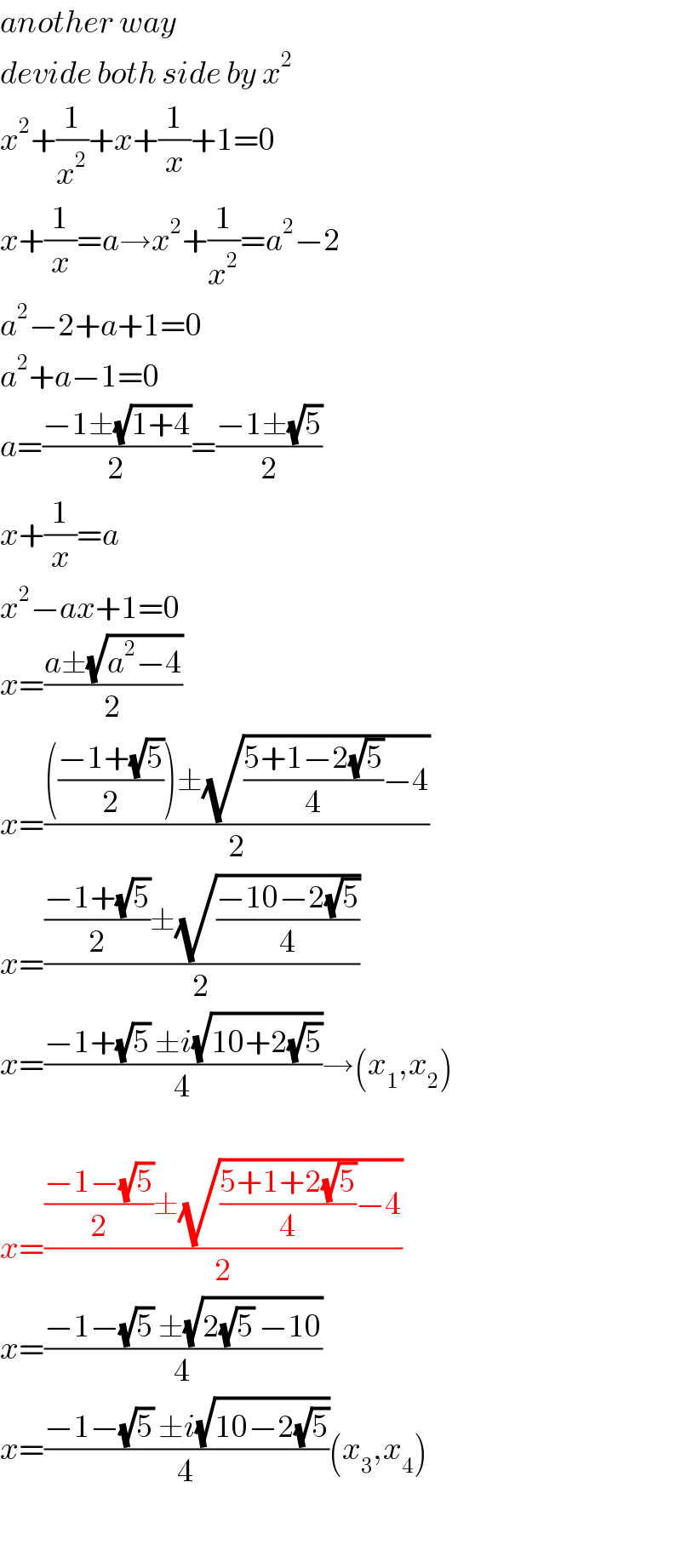
Question and Answers Forum
Question Number 62424 by aliesam last updated on 21/Jun/19

Commented by mathmax by abdo last updated on 21/Jun/19
![1 is not root for this equatio (e) ⇔((1−x^5 )/(1−x)) =0 ⇔ x^5 =1 let x =re^(iθ) ( we take x from C) x^5 =1 ⇔ r^5 e^(5iθ) =e^(i2kπ) ⇔ r=1 and 5θ =2kπ ⇒θ =((2kπ)/5) k∈[0,4] the roots are x_k =e^(i((2kπ)/5)) x_0 is not roots ⇒k∈[1,4] x_1 =e^((i2π)/5) ,x_2 = e^(i(((4π)/5))) =e^(i(π−(π/5))) =−e^(−((iπ)/5)) x_3 = e^(i(((6π)/5))) =e^(i(π+(π/5))) =−e^((iπ)/5) x_4 =e^(i(((8π)/5))) =e^(i(2π−((2π)/5))) = e^(−((i2π)/5)) and we see that x_4 =x_1 ^− and x_3 =x_2 ^−](Q62429.png)
Commented by aliesam last updated on 21/Jun/19

Answered by tanmay last updated on 21/Jun/19

Commented by Tawa1 last updated on 21/Jun/19

Commented by Tawa1 last updated on 21/Jun/19

